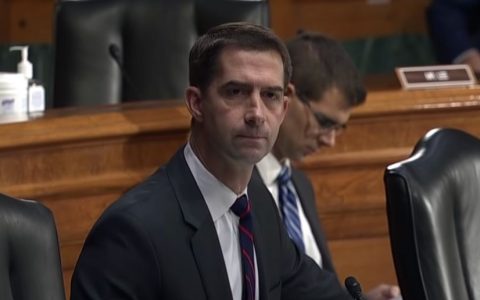
When you’re calling Trump a liar, you better be correct. The U.S. President won’t take that lightly.
And now one of Trump’s top foreign enemies was forced to confess Trump was right all along.
Iranian Foreign Minister Seyed Abbas Araghchi acknowledged that last month’s U.S. military strikes inflicted severe damage on Iran’s nuclear infrastructure. In an interview with Fox News, he confirmed the significant impact, stating, “It is stopped because, yes, damages are serious and severe. But obviously we cannot give up [on] enrichment because it is an achievement of our own scientists. And now, more than that, it is a question of national pride.” He further emphasized, “facilities have been destroyed,” highlighting the extent of the devastation.
Despite the destruction, Araghchi stressed Iran’s determination to continue its uranium enrichment program, viewing it as a matter of national pride and scientific achievement. He asserted that Iran possesses the capability to rebuild, noting, “It is developed by ourselves. It is an achievement by ourselves. The technology is there. The scientists are there, the people who have run these facilities are there. Buildings can be rebuilt. Facilities can be rebuilt. Machines can be replaced.” He also suggested that military action alone cannot halt Iran’s nuclear ambitions, stating, “I think the recent attack proved that there is no military option for our nuclear program.”
Araghchi indicated that preventing Iran from acquiring nuclear weapons is possible through diplomatic means, saying, “If the goal is to make sure that Iran will never have nuclear weapons, that is achievable.” However, he reaffirmed Iran’s commitment to its nuclear program despite the setbacks caused by the U.S. strikes.
President Trump and U.S. officials have maintained that the June 21, strikes on Iran’s three key nuclear facilities—Fordow, Natanz, and Isfahan—resulted in their complete destruction. The administration has consistently described the operation as a decisive success, claiming it eliminated Iran’s nuclear enrichment capabilities.
Recent reports from various news outlets cited an intelligence assessment suggesting that only one of the three facilities was significantly damaged, with the other two potentially able to resume enrichment activities soon. The White House and Department of Defense strongly disputed these claims, insisting that all three sites were obliterated. Pentagon spokesman Sean Parnell stated that the strikes set Iran’s nuclear program back by “one to two years,” reinforcing the administration’s position on the operation’s success.
Media Has Egg On Their Face After Trump Admin’s Strikes On Iran Vindicated
On June 21, the U.S. military conducted a series of precision strikes, codenamed Operation Midnight Hammer, targeting three of Iran’s key nuclear facilities: Fordow, Natanz, and Isfahan. The operation involved B-2 stealth bombers deploying 30,000-pound GBU-57 Massive Ordnance Penetrator bombs and submarine-launched Tomahawk missiles. President Trump hailed the strikes as a “spectacular military success,” claiming that Iran’s nuclear enrichment capabilities were “completely and totally obliterated.”
Initial skepticism arose from media reports citing a Defense Intelligence Agency (DIA) assessment, which suggested that only the Fordow facility was significantly damaged, while Natanz and Isfahan sustained lesser impacts, potentially allowing Iran to resume enrichment within months. This preliminary report, labeled as “low confidence,” sparked controversy, with some outlets questioning the Trump administration’s claims of total destruction.
The White House and Pentagon swiftly rejected the DIA’s early findings, with press secretary Karoline Leavitt calling the report “flat-out wrong” and alleging it was leaked by a “low-level loser” to undermine the administration. Defense Secretary Pete Hegseth emphasized the operation’s success, stating, “Our massive bombs hit exactly the right spot at each target and worked perfectly.”
Subsequent assessments have bolstered the administration’s position. CIA Director John Ratcliffe reported “credible intelligence” indicating that Iran’s nuclear program was “severely damaged,” with key facilities requiring years to rebuild. The Israeli Atomic Energy Commission echoed this, stating that the Fordow strike “destroyed the site’s critical infrastructure,” rendering it inoperable.
Satellite imagery from Maxar Technologies further supports these claims, showing significant damage at Fordow, with craters and debris indicating the penetration of bunker-buster bombs. Similar imagery from Natanz and Isfahan revealed structural damage, contradicting earlier media narratives of minimal impact.
International Atomic Energy Agency (IAEA) Director General Rafael Grossi provided a critical perspective, noting that the strikes destroyed many of Iran’s centrifuges due to their precision engineering being susceptible to vibrations from the bombs. He stated, “Given the power of these devices and the technical characteristics of a centrifuge, we already know that these centrifuges are no longer operational.”
Iranian officials, including Foreign Minister Seyed Abbas Araghchi, have admitted to the severe damage. Araghchi’s statements to Fox News confirmed that the facilities were “destroyed” and the damage was “serious and severe,” aligning with U.S. claims despite his insistence on Iran’s ability to rebuild.
The media’s initial distrust of the Trump administration’s claims has been largely discredited by these converging assessments. Outlets that amplified the DIA’s preliminary report have faced criticism for premature conclusions, especially as more comprehensive intelligence emerged. The administration’s assertions are now supported by multiple sources, including U.S. and Israeli intelligence, satellite imagery, and even Iranian admissions.
Analysts note that Iran’s ability to rebuild is constrained by the loss of critical infrastructure and centrifuges, which are not easily replaced. The strikes targeted not only physical facilities but also Iran’s uranium conversion capabilities, particularly at Isfahan, further hampering its program. Secretary of State Marco Rubio confirmed, “In Isfahan, there was this conversion site, which is how you turn this metal into something that’s useful. That’s wiped out.”
While Iran may retain some enriched uranium stockpiles, reportedly moved before the strikes, the destruction of key enrichment and conversion facilities has significantly delayed its nuclear ambitions. Experts estimate a setback of at least one to two years, with some suggesting a longer timeline due to the complexity of reconstructing fortified sites like Fordow.
The operation’s success has also shifted regional dynamics. Israeli Prime Minister Benjamin Netanyahu praised the strikes as a historic blow against Iran’s nuclear threat, while Iran’s leadership faces internal and external pressure to respond without escalating further.
Critics who initially questioned the strikes’ effectiveness have been marginalized as evidence mounts. The combination of U.S. military precision, corroborated by intelligence and imagery, has validated the administration’s claims. The narrative of “obliteration” has transitioned from political rhetoric to a substantiated outcome, with Iran’s nuclear program facing a significant, if not insurmountable, setback.
However, uncertainties remain about Iran’s long-term intentions. Araghchi’s defiance suggests a commitment to rebuilding, though logistical and financial challenges may hinder progress. The IAEA’s ongoing monitoring will be crucial to verify Iran’s nuclear activities moving forward.
The Trump administration’s strikes have thus achieved a strategic victory, dismantling key components of Iran’s nuclear program and reinforcing U.S. military credibility. The media’s initial skepticism, driven by incomplete intelligence, has been overshadowed by a clearer picture of devastation, affirming the operation’s impact.





